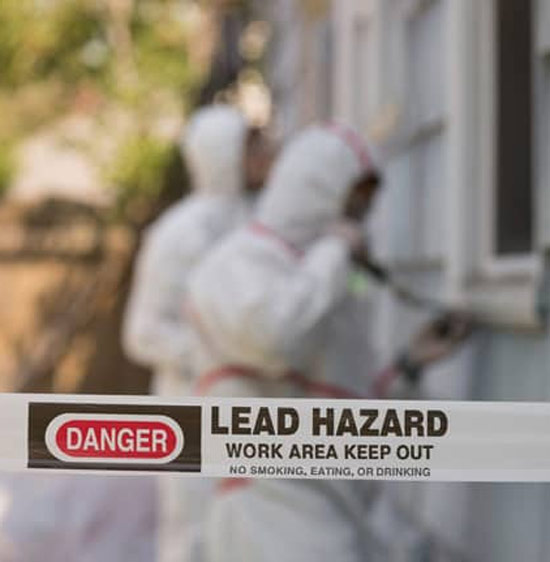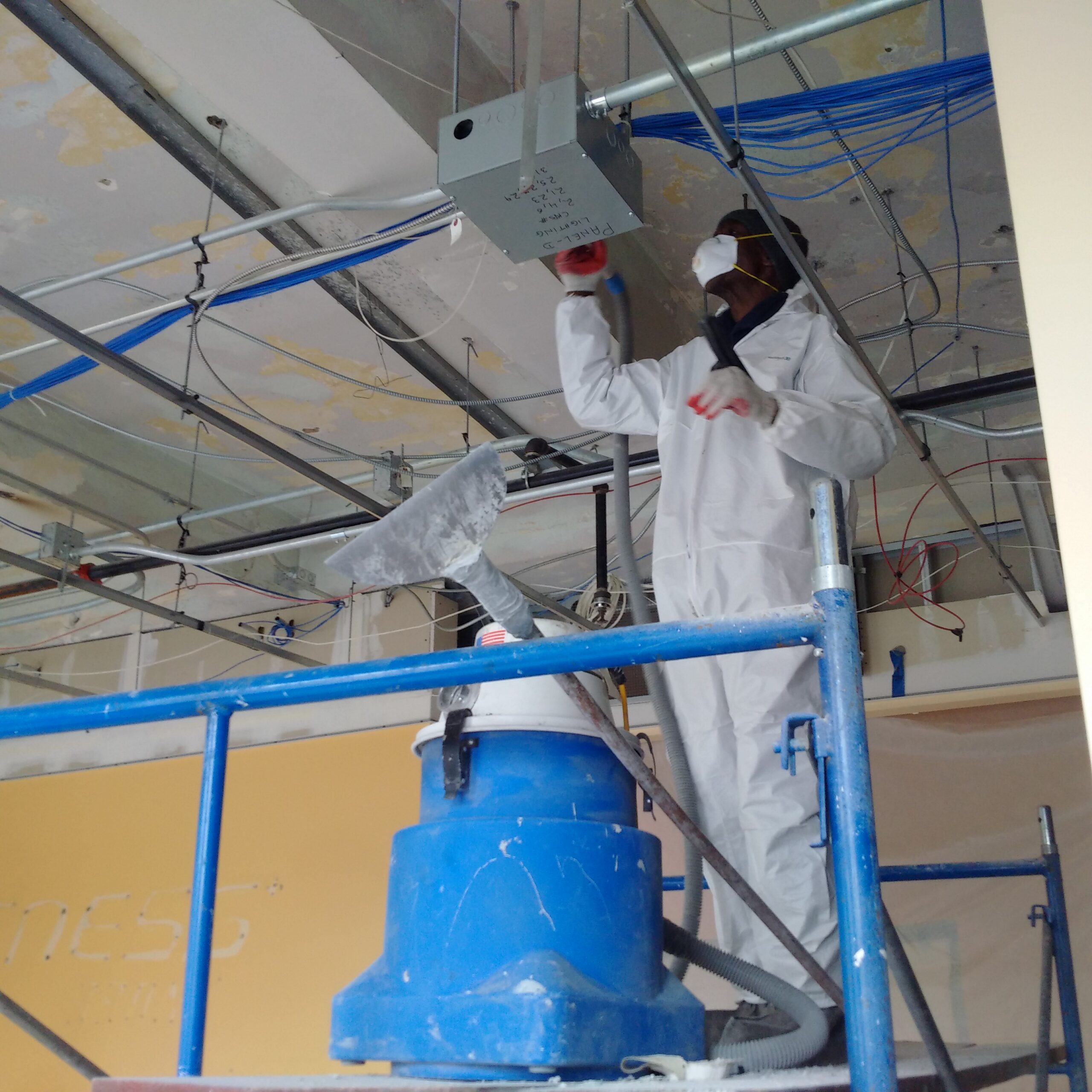Comprehensive Guide on Effective Lead Offense Elimination Techniques
In the realm of ecological security, addressing lead offenses demands a meticulous and structured strategy. This extensive overview starts by highlighting the vital preliminary steps of recognizing lead threats via innovative analysis and testing approaches. Strategies such as XRF evaluation and dust clean sampling are essential in identifying contamination resources. Furthermore, the overview specifies on the importance of adhering to rigorous safety and security procedures during the removal process, including making use of proper PPE and separating influenced areas (Lead Paint Removal Company). The succeeding areas guarantee to discuss post-removal confirmation and preventative strategies, ensuring long-lasting safety and compliance. Discover the detailed details that make these strategies not just efficient yet vital.
Recognizing Lead Risks
Recognizing lead hazards is a critical very first step in mitigating the dangers connected with lead exposure. Lead, a toxic steel, can be present in different environmental mediums, including paint, soil, water, and dust. It poses extreme wellness risks, specifically to kids and expecting females, resulting in neurological damages and developing delays. Precise identification of possible lead resources is essential for efficient remediation.
The first phase in identifying lead hazards entails comprehending typical lead sources within the constructed setting. Frameworks built before 1978 are particularly at risk due to the prevalent usage of lead-based paint during that duration. Additionally, soil contamination can take place from wearing away exterior paint, commercial discharges, or historical usage of leaded gas.
Another substantial resource is lead piping and plumbing fixtures, which can leach introduce alcohol consumption water. Customer products such as toys, porcelains, and imported items may also have harmful lead levels. Especially, work atmospheres and pastimes including lead can track pollutants right into homes.
Analysis and Testing
When dealing with lead risks, effective assessment and screening are vital. Initial assessment commonly entails an aesthetic inspection to recognize prospective lead sources, such as deteriorating paint or polluted dirt.

Dust wipe tasting is an additional crucial method, particularly in household settings. By accumulating samples from floorings, windowsills, and various other surfaces, this approach offers understandings right into possible direct exposure threats. Dirt testing around building boundaries is crucial to find lead contamination that can position dangers, especially to kids.
Safe Removal Treatments
Upon finishing thorough analysis and screening, implementing secure removal treatments is the next critical phase in addressing lead threats. This process ensures that lead-contaminated materials are efficiently and safely removed, minimizing threat to both workers and citizens. The very first step includes isolating the afflicted location making use of plastic bed linen and proper sealing methods to stop the spread of lead dirt.
Employees need to don suitable personal protective tools (PPE), consisting of respirators, gloves, and non More about the author reusable coveralls, to reduce direct exposure. Utilizing specialized tools and wet techniques, such as wet sanding or utilizing HEPA-filtered vacuum cleaners, lowers the dispersion of lead particles. It is important to avoid dry fining sand or rough blasting, as these approaches can create dangerous lead dirt.
Waste disposal is an additional crucial part; all infected materials need to be securely nabbed and labeled according to EPA and regional laws. In addition, detailed cleaning of the workplace with HEPA vacuum cleaners and wet cleaning makes sure the removal of recurring lead bits.
Post-Removal Verification

Verification of effective lead removal, understood as post-removal confirmation, is vital to guarantee the security and habitability of the remediated area. This evaluation guarantees that all known resources of lead have actually been resolved and that no noticeable indicators of contamination remain.
Complying with the visual assessment, ecological tasting is carried out. This involves accumulating dust, soil, and in some cases water samples from the remediated area. Certified research laboratories assess these samples to determine lead levels, guaranteeing they fall listed below the security limits developed by regulative bodies such as the Epa (EPA)
On top of that, air quality screening may be done to find air-borne lead fragments, particularly in instances where extensive lead-based paint removal or renovation has happened. The results of these examinations offer measurable data verifying that the lead levels are within allowable limits.
Inevitably, post-removal verification serves as an essential checkpoint, validating the efficiency of the lead abatement efforts and safeguarding the health of Full Report residents and visitors.
Preventive Steps and Upkeep

A key precautionary step consists of using lead-safe certified professionals for any remodelling, repair, or paint tasks. These professionals are learnt practices that minimize lead dirt and debris. Additionally, maintaining painted surface areas to prevent damaging or peeling Recommended Site off is necessary, as wearing away paint can launch lead bits into the atmosphere.
Educational efforts targeting homeowner and tenants concerning the threats of lead and the significance of reporting any kind of possible risks can further improve precautionary efforts. Routine cleansing utilizing HEPA vacuums and damp wiping strategies can considerably lower lead dust buildup.
Conclusion
In summary, reliable lead infraction elimination requires a meticulous approach including extensive analysis, exact testing, and rigid elimination treatments. Ongoing examinations and maintenance are vital to minimize future lead dangers, thereby safeguarding public health and making sure sustained conformity with governing needs.